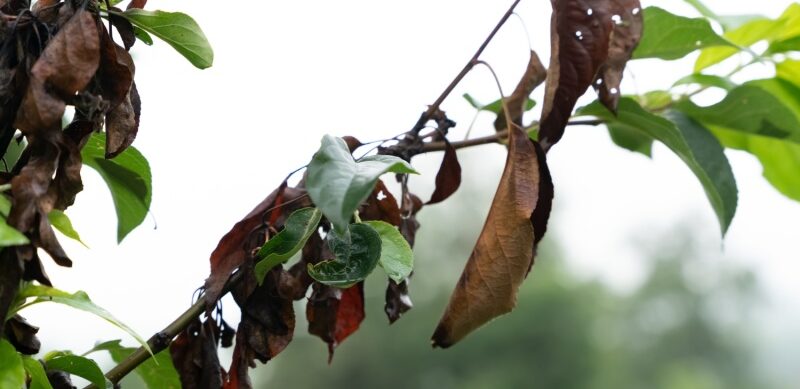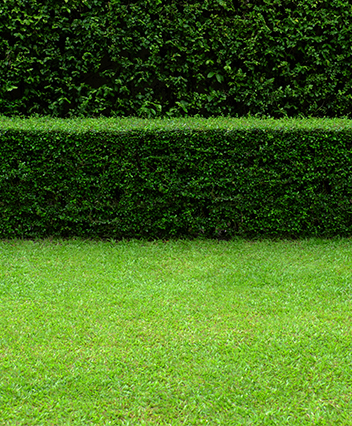Signs Your Trees and Shrubs Have an Insect Infestation

Healthy trees and shrubs are essential to a thriving landscape, but sometimes they can fall victim to insect infestations. Recognizing the signs early is crucial for effective treatment and long-term plant health. Here are the key indicators that your trees and shrubs might be suffering from an insect infestation.
Visible Signs of Infestation
Discoloration and Leaf Damage
One of the first signs of an infestation is a change in leaf color. If you notice that leaves are yellowing, browning, or developing unusual patterns, it may be due to insects sucking the sap from your plants. Leaf damage, such as holes, curled edges, or stippling (tiny dots), can also indicate the presence of pests like aphids or mites.
Sticky Residue and Sooty Mold
Many sap-sucking insects excrete a sticky substance known as honeydew. This residue often attracts sooty mold, a black fungus that grows on the sticky surface, further impairing the plant’s ability to photosynthesize. The presence of honeydew and mold is a strong indicator of aphids, whiteflies, or scale insects.
Webbing and Silken Threads
Spider mites and some caterpillars produce fine webs or silken threads on the undersides of leaves or between branches. This webbing not only looks unsightly but also signals that an infestation is underway. If you notice any unusual webbing on your plants, it’s time to inspect them more closely.
Behavioral and Structural Clues
Premature Leaf Drop
When trees and shrubs are under stress from an insect infestation, they may shed their leaves prematurely. If you see more leaves on the ground than usual, especially in the midst of a growing season, it could be a sign that pests are affecting your plants’ health.
Stunted Growth
Insect infestations can lead to stunted or uneven growth. New shoots may be smaller than normal, and overall plant vigor can decline. This reduced growth is often due to the loss of essential nutrients caused by pests feeding on the plant.
Inspecting for Insects
Regular Monitoring
The best defense against an insect infestation is early detection. Regularly inspect your trees and shrubs, especially during the warmer months when insect activity is at its peak. Use a magnifying glass to check for small pests and look under leaves for signs of webbing or sticky residue.
Check Both Sides of the Leaves
Many insects, such as whiteflies and spider mites, tend to hide on the undersides of leaves. Make it a habit to flip leaves over and inspect both sides. This can help you catch an infestation before it becomes severe.
Look for Insect Clusters
Clusters of insects or egg masses are another clear sign. If you see tiny clusters or visible groups of insects on your plants, it’s time to take preventive or curative measures.
What to Do If You Suspect an Infestation
Natural Remedies
If the infestation is minor, consider using organic insecticidal soap or neem oil. These natural remedies are effective against many common pests without harming beneficial insects. Be sure to follow the product instructions carefully.
Chemical Controls
For more severe infestations, targeted chemical treatments may be necessary. Choose products that are specific to the pest you’re dealing with and always adhere to label directions. Spot treatments are often more effective and less harmful to the overall ecosystem.
Professional Assistance
If the infestation appears widespread or severe, it may be time to consult a professional. Expert arborists or pest control specialists in Fresno can accurately diagnose the problem and provide tailored solutions that protect the health of your trees and shrubs.
Long-Term Prevention
Maintain Plant Health
Healthy plants are less vulnerable to infestations. Ensure your trees and shrubs receive the proper water, nutrients, and care they need. Regular pruning, fertilization, and pest monitoring are essential components of long-term plant health.
Recognizing the signs of an insect infestation in your trees and shrubs is the first step toward effective management. Discoloration, sticky residues, webbing, and stunted growth are all red flags that shouldn’t be ignored. With regular inspections, proper care, and timely intervention, you can protect your plants from serious damage and ensure a healthy, vibrant landscape year-round. If you need expert help, don’t hesitate to contact the pros at The Experienced Gardener to get help with the unique climate and pest challenges in Fresno.


